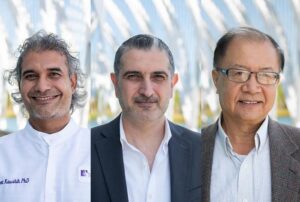Five researchers from Florida Polytechnic University are being recognized as being among the top 2% of scientists globally on an annual list compiled by Stanford University.
“This achievement represents years of hard work, determination, and dedication by these faculty,” said Dr. Terry Parker, Florida Poly’s provost. “We are exceptionally proud of these researchers’ recognition, and the University will continue to support their scholarship efforts.”

This is the third year Florida Poly researchers were recognized on the list of top scientists in the world. Their recognitions were separated into two categories: work and citations in the last year and work and citations over a scientist’s career.
Dr. Ajeet Kaushik, assistant professor of environmental engineering, and Dr. Muhammad Rashid, professor of electrical and computer engineering, were recognized for work and citations over their entire careers. Each also previously was named to the list of top scientists over the course of a year. Rashid is a world-renowned scholar who has published over 160 technical papers and 27 books being used by more than 50 universities. Kaushik’s work focuses on biosensors and nanomedicine.
“This feels like an acknowledgement of my consistent hard work, but the credit goes to the institution, because Florida Poly is so supportive and so motivating,” said Kaushik, who also was among those on the list of top researchers for the past year.
Alongside him were Dr. Md Selim Habib assistant professor of electrical and computer engineering; Dr. Hisham Mahmood, assistant professor of cybersecurity and electrical engineering; and Dr. Patrick Zhang, director of research, mining, and beneficiation at Florida Poly’s Florida Industrial and Phosphate Research Institute.
“I believe this says that work I did on publications in the past has had a significant impact,” said Zhang, who also was on last year’s list and is focusing on work regarding recovering rare earth elements from phosphate processing waste.
Mahmood also was included on the list for two years in a row for his work on energy systems integration and distributed generation control and optimization. He now is working on electrical vehicle charging and power system architectures.
The findings are published in PLOS Biology.


